-
 Bitcoin
Bitcoin $88,629.0112
1.53% -
 Ethereum
Ethereum $1,633.3416
0.24% -
 Tether USDt
Tether USDt $1.0000
0.01% -
 XRP
XRP $2.0979
-1.08% -
 BNB
BNB $605.5535
0.62% -
 Solana
Solana $140.2764
0.66% -
 USDC
USDC $1.0000
0.01% -
 Dogecoin
Dogecoin $0.1643
1.41% -
 TRON
TRON $0.2438
0.47% -
 Cardano
Cardano $0.6391
-0.43% -
 Chainlink
Chainlink $13.4401
-0.21% -
 Avalanche
Avalanche $20.3874
-0.96% -
 UNUS SED LEO
UNUS SED LEO $8.8373
-2.11% -
 Stellar
Stellar $0.2496
-3.26% -
 Sui
Sui $2.3313
3.08% -
 Shiba Inu
Shiba Inu $0.0...01260
-0.18% -
 Hedera
Hedera $0.1732
1.55% -
 Toncoin
Toncoin $2.9117
-3.34% -
 Bitcoin Cash
Bitcoin Cash $346.5808
1.81% -
 Hyperliquid
Hyperliquid $18.4964
3.15% -
 Litecoin
Litecoin $79.8162
-0.77% -
 Polkadot
Polkadot $3.7801
-3.27% -
 Dai
Dai $1.0000
0.00% -
 Bitget Token
Bitget Token $4.4558
-0.32% -
 Ethena USDe
Ethena USDe $0.9992
0.01% -
 Pi
Pi $0.6369
0.62% -
 Monero
Monero $217.7312
1.28% -
 Pepe
Pepe $0.0...08147
2.99% -
 Uniswap
Uniswap $5.4346
0.09% -
 Aptos
Aptos $4.9660
-4.00%
What is Binance's forced liquidation mechanism?
Binance's forced liquidation mechanism protects the platform and traders by automatically closing positions that fall below the required margin level during leveraged trading.
Apr 12, 2025 at 08:28 pm
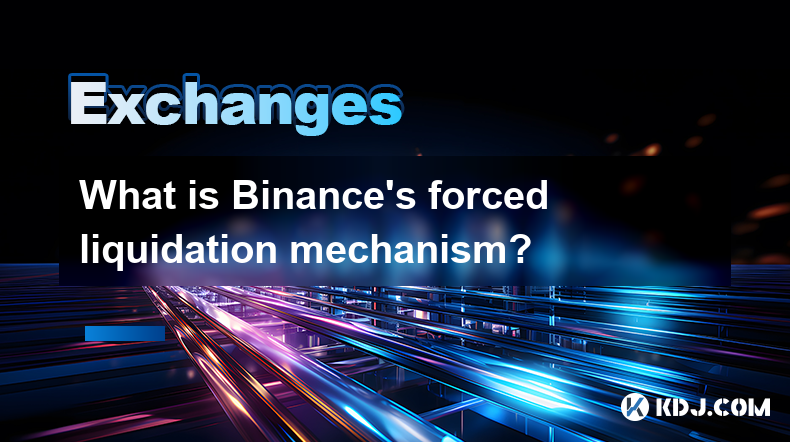
What is Binance's Forced Liquidation Mechanism?
Binance, one of the world's leading cryptocurrency exchanges, implements a forced liquidation mechanism to manage risk in its leveraged trading environment. This mechanism is crucial for maintaining the stability and integrity of the platform, ensuring that traders adhere to margin requirements and manage their positions effectively. In this article, we will explore the intricacies of Binance's forced liquidation mechanism, its purpose, how it works, and what traders need to know to navigate this aspect of leveraged trading.
h3Understanding the Purpose of Forced Liquidation
The primary goal of Binance's forced liquidation mechanism is to protect both the exchange and its users from the risks associated with leveraged trading. When traders use leverage, they borrow funds to increase their trading position, which can amplify both potential gains and losses. If the market moves against a trader's position, the losses can quickly exceed the initial margin, leading to a situation where the trader cannot cover the borrowed funds. Forced liquidation helps mitigate this risk by automatically closing positions that fall below the required margin level, thereby preventing further losses and maintaining the platform's financial stability.
h3How Forced Liquidation Works on Binance
Binance's forced liquidation process is triggered when a trader's position falls below the maintenance margin level. This level is set as a percentage of the total position value and is designed to ensure that there are sufficient funds to cover potential losses. Here’s how the process unfolds:
Monitoring Margin Levels: Binance continuously monitors the margin levels of all open positions. If a position's margin level drops below the maintenance margin, the platform initiates the liquidation process.
Liquidation Price Calculation: The liquidation price is calculated based on the position size, leverage, and the maintenance margin requirement. This price is the point at which the position will be automatically closed to prevent further losses.
Execution of Liquidation: Once the liquidation price is reached, Binance's system automatically closes the position at the best available market price. The aim is to minimize the impact on the trader's account and prevent the position from incurring further losses.
Post-Liquidation Actions: After liquidation, any remaining funds in the trader's account are used to cover the borrowed amount. If there are insufficient funds, the trader may incur a deficit, which they are responsible for settling.
h3Key Factors Influencing Forced Liquidation
Several factors can influence the likelihood and timing of forced liquidation on Binance:
Market Volatility: High market volatility can lead to rapid price movements, increasing the risk of positions being liquidated. Traders need to be aware of market conditions and adjust their leverage accordingly.
Leverage Levels: The amount of leverage used directly impacts the risk of liquidation. Higher leverage increases the potential for both gains and losses, making positions more susceptible to liquidation.
Position Size: Larger positions require more margin to maintain, and thus are more likely to be liquidated if the market moves unfavorably.
Maintenance Margin Requirement: Binance sets the maintenance margin requirement to ensure that positions have enough buffer to withstand market fluctuations. Understanding and managing this requirement is crucial for avoiding liquidation.
h3Strategies to Avoid Forced Liquidation
Traders can employ several strategies to minimize the risk of forced liquidation on Binance:
Use Lower Leverage: By using lower leverage, traders can reduce the risk of their positions being liquidated. Lower leverage means smaller potential losses, providing a larger buffer against market movements.
Set Stop-Loss Orders: Implementing stop-loss orders can help traders automatically close positions before they reach the liquidation price. This proactive approach can prevent forced liquidation and limit losses.
Monitor Positions Closely: Regularly monitoring open positions allows traders to react quickly to market changes. Adjusting positions or adding more margin can help maintain the required margin level.
Diversify Trading Strategies: Diversifying across different assets and strategies can spread risk, reducing the impact of adverse movements in any single position.
h3Understanding the Impact of Forced Liquidation
Forced liquidation can have significant implications for traders on Binance. Understanding these impacts is essential for managing leveraged trading effectively:
Financial Losses: The most immediate impact of forced liquidation is the potential for financial losses. If the liquidation price is unfavorable, traders may lose more than their initial margin.
Account Deficits: In cases where the liquidation does not cover the borrowed amount, traders may end up with an account deficit. Binance requires traders to settle these deficits, which can lead to additional financial strain.
Emotional Impact: The sudden closure of positions can be emotionally challenging for traders, leading to stress and potential changes in trading behavior.
Reputation and Trust: For institutional traders or those managing funds, forced liquidations can impact their reputation and the trust of their clients. Managing risk effectively is crucial for maintaining credibility.
h3Frequently Asked Questions
Q1: Can I avoid forced liquidation by adding more margin to my account?
Yes, adding more margin to your account can help maintain the required margin level and prevent forced liquidation. However, it's important to monitor your positions closely and adjust your trading strategy to manage risk effectively.
Q2: How does Binance determine the liquidation price?
Binance calculates the liquidation price based on the position size, leverage, and the maintenance margin requirement. This price is the point at which the position will be automatically closed to prevent further losses.
Q3: What happens if I have an account deficit after liquidation?
If you have an account deficit after liquidation, you are responsible for settling it. Binance may require you to deposit additional funds to cover the deficit, and failure to do so could result in further account restrictions.
Q4: Is there a way to predict when a forced liquidation might occur?
While it's challenging to predict forced liquidation with certainty, monitoring market volatility, your position's margin level, and setting appropriate stop-loss orders can help you anticipate and manage the risk of liquidation.
Disclaimer:info@kdj.com
The information provided is not trading advice. kdj.com does not assume any responsibility for any investments made based on the information provided in this article. Cryptocurrencies are highly volatile and it is highly recommended that you invest with caution after thorough research!
If you believe that the content used on this website infringes your copyright, please contact us immediately (info@kdj.com) and we will delete it promptly.
- Trump Establishes a Limited Bitcoin Strategic Reserve via Executive Order
- 2025-04-22 20:50:12
- Meme Coin Did Not Ruin This Cycle, But Instead Accelerated the Maturity of the Industry as a Market Catalyst
- 2025-04-22 20:50:12
- Coinbase Transfers 29.5M XRP Tokens From Cold Wallet to Hot Wallet, Igniting Fresh Speculation About Price Action
- 2025-04-22 20:45:12
- Rexas Finance (RXS) Will Overtake Shiba Inu (SHIB) by the End of 2025
- 2025-04-22 20:45:12
- Introducing 100X MEMEBOX: The Future of Structured, Trend-Driven Wealth Generation
- 2025-04-22 20:40:12
- Ripple's U.S. dollar-pegged stablecoin, RLUSD, has officially launched
- 2025-04-22 20:40:12
Related knowledge
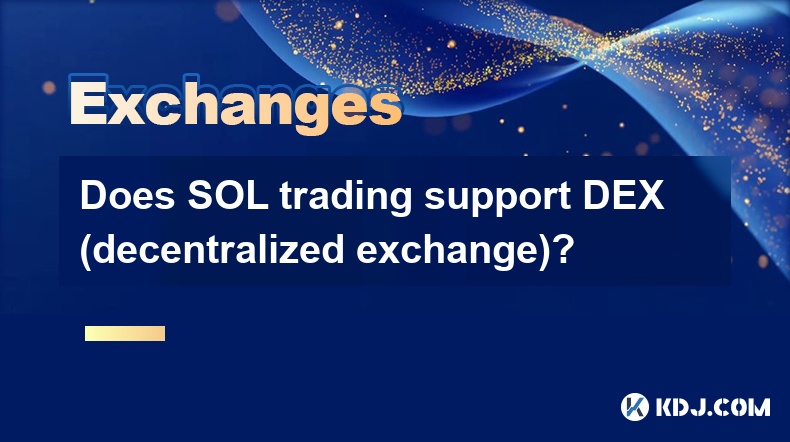
Does SOL trading support DEX (decentralized exchange)?
Apr 19,2025 at 05:21am
Solana (SOL), a high-performance blockchain platform, has gained significant attention in the cryptocurrency community for its fast transaction speeds and low fees. One of the key aspects that traders and investors often inquire about is whether SOL trading supports decentralized exchanges (DEXs). In this article, we will explore this topic in detail, p...

How to choose a reliable SOL trading platform?
Apr 21,2025 at 12:07am
Choosing a reliable SOL trading platform is crucial for anyone looking to engage in trading Solana (SOL) cryptocurrency. With the growing popularity of Solana, numerous platforms have emerged, each offering different features and levels of security. This article will guide you through the essential factors to consider when selecting a reliable SOL tradi...

On which platforms can SOL be bought and sold?
Apr 21,2025 at 10:22am
Solana (SOL) is a popular cryptocurrency known for its high transaction speeds and low fees, making it a favored choice among crypto enthusiasts. If you're looking to buy or sell SOL, there are several platforms where you can do so. In this article, we will explore the various platforms that support the trading of SOL, ensuring you have a comprehensive ...
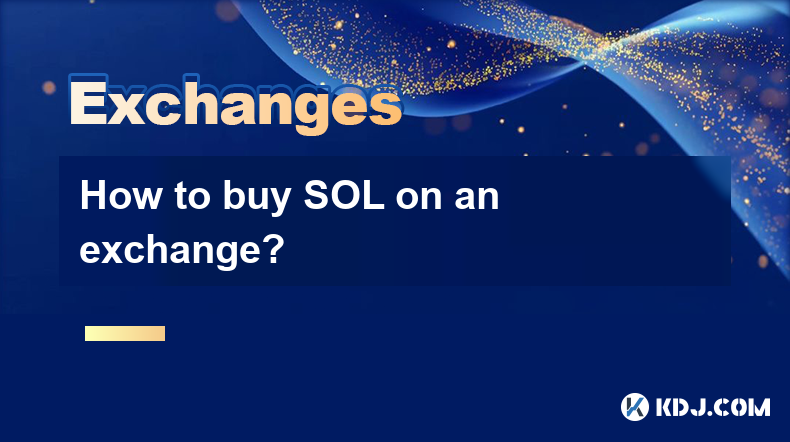
How to buy SOL on an exchange?
Apr 20,2025 at 01:21am
Introduction to Buying SOL on an ExchangeSOL, the native cryptocurrency of the Solana blockchain, has garnered significant attention in the crypto world due to its high throughput and low transaction costs. If you're interested in adding SOL to your investment portfolio, buying it on a cryptocurrency exchange is one of the most straightforward methods. ...
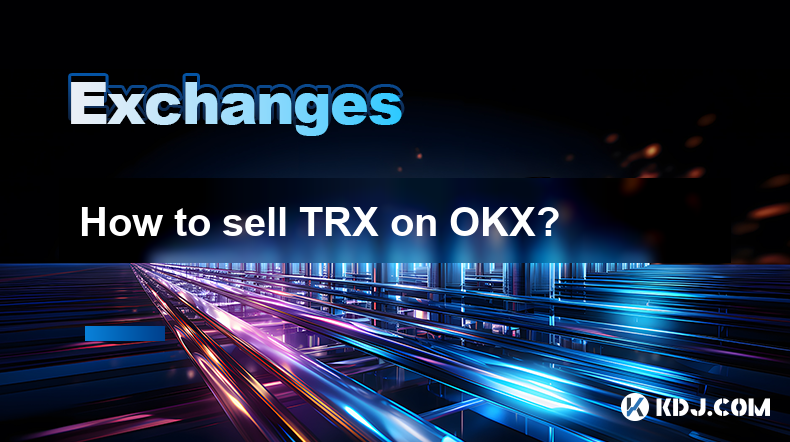
How to sell TRX on OKX?
Apr 18,2025 at 11:07pm
Selling TRX on OKX is a straightforward process that can be completed in a few simple steps. This article will guide you through the entire process, ensuring that you understand each step thoroughly. Whether you are a beginner or an experienced trader, this guide will help you navigate the OKX platform with ease. Preparing to Sell TRX on OKXBefore you c...
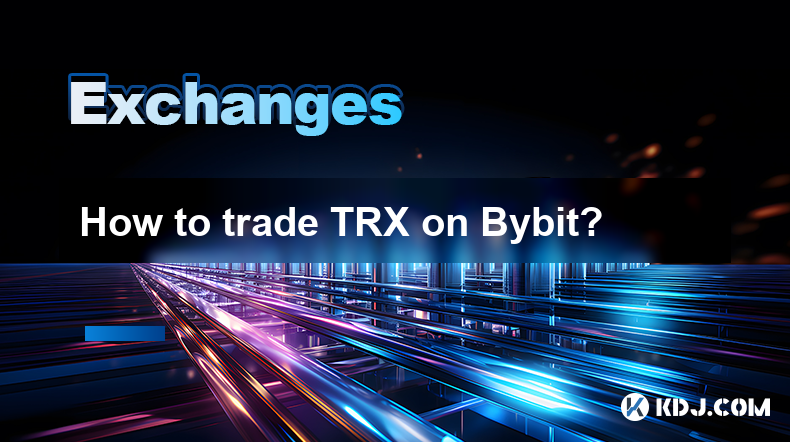
How to trade TRX on Bybit?
Apr 20,2025 at 04:15pm
Trading TRX on Bybit can be an exciting venture for both new and experienced cryptocurrency traders. Bybit, known for its robust trading platform and user-friendly interface, offers a variety of features that can help you trade TRX effectively. In this guide, we'll walk you through the essential steps and tips to successfully trade TRX on Bybit. Setting...

Does SOL trading support DEX (decentralized exchange)?
Apr 19,2025 at 05:21am
Solana (SOL), a high-performance blockchain platform, has gained significant attention in the cryptocurrency community for its fast transaction speeds and low fees. One of the key aspects that traders and investors often inquire about is whether SOL trading supports decentralized exchanges (DEXs). In this article, we will explore this topic in detail, p...

How to choose a reliable SOL trading platform?
Apr 21,2025 at 12:07am
Choosing a reliable SOL trading platform is crucial for anyone looking to engage in trading Solana (SOL) cryptocurrency. With the growing popularity of Solana, numerous platforms have emerged, each offering different features and levels of security. This article will guide you through the essential factors to consider when selecting a reliable SOL tradi...

On which platforms can SOL be bought and sold?
Apr 21,2025 at 10:22am
Solana (SOL) is a popular cryptocurrency known for its high transaction speeds and low fees, making it a favored choice among crypto enthusiasts. If you're looking to buy or sell SOL, there are several platforms where you can do so. In this article, we will explore the various platforms that support the trading of SOL, ensuring you have a comprehensive ...

How to buy SOL on an exchange?
Apr 20,2025 at 01:21am
Introduction to Buying SOL on an ExchangeSOL, the native cryptocurrency of the Solana blockchain, has garnered significant attention in the crypto world due to its high throughput and low transaction costs. If you're interested in adding SOL to your investment portfolio, buying it on a cryptocurrency exchange is one of the most straightforward methods. ...

How to sell TRX on OKX?
Apr 18,2025 at 11:07pm
Selling TRX on OKX is a straightforward process that can be completed in a few simple steps. This article will guide you through the entire process, ensuring that you understand each step thoroughly. Whether you are a beginner or an experienced trader, this guide will help you navigate the OKX platform with ease. Preparing to Sell TRX on OKXBefore you c...

How to trade TRX on Bybit?
Apr 20,2025 at 04:15pm
Trading TRX on Bybit can be an exciting venture for both new and experienced cryptocurrency traders. Bybit, known for its robust trading platform and user-friendly interface, offers a variety of features that can help you trade TRX effectively. In this guide, we'll walk you through the essential steps and tips to successfully trade TRX on Bybit. Setting...
See all articles























































































